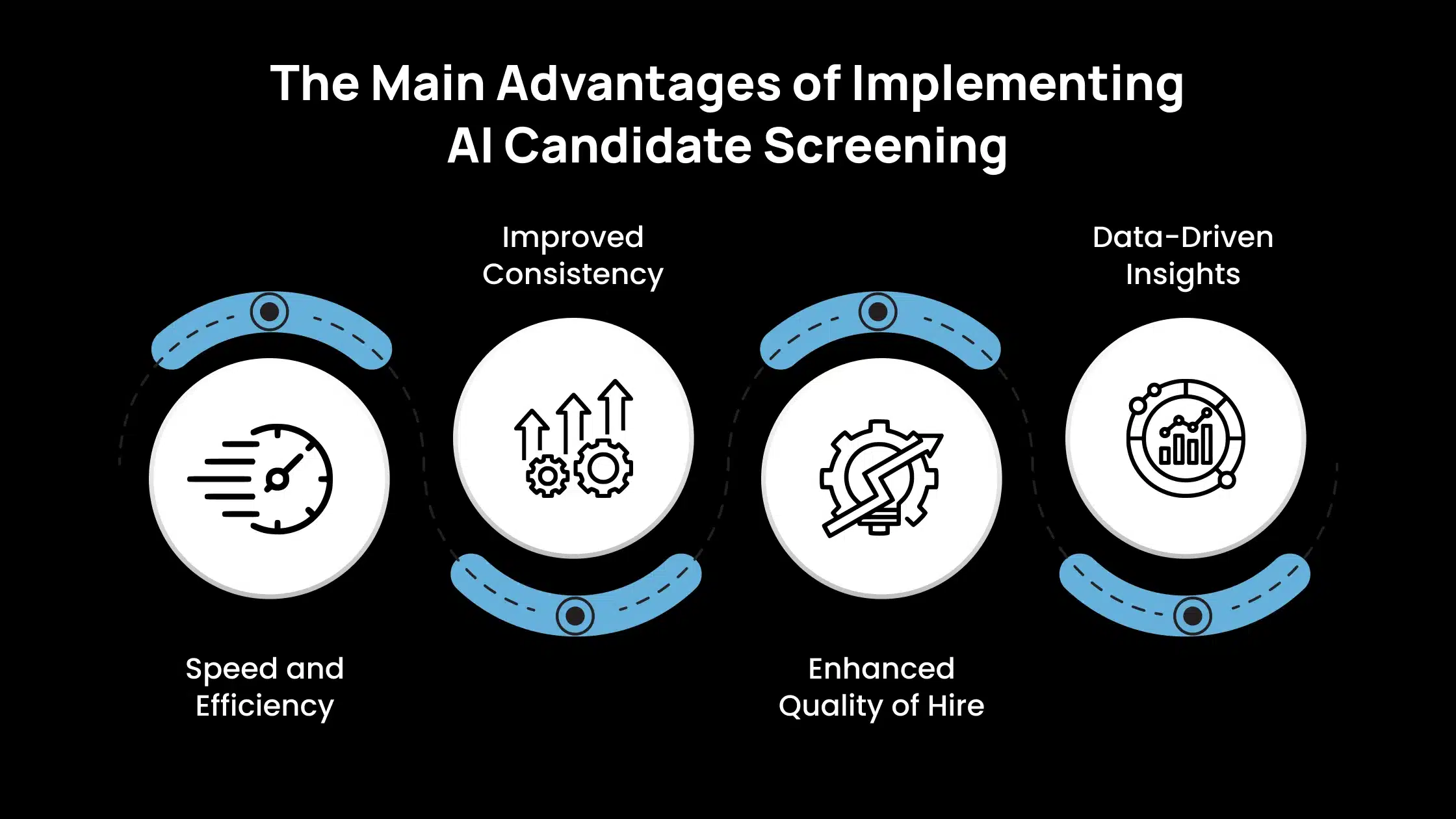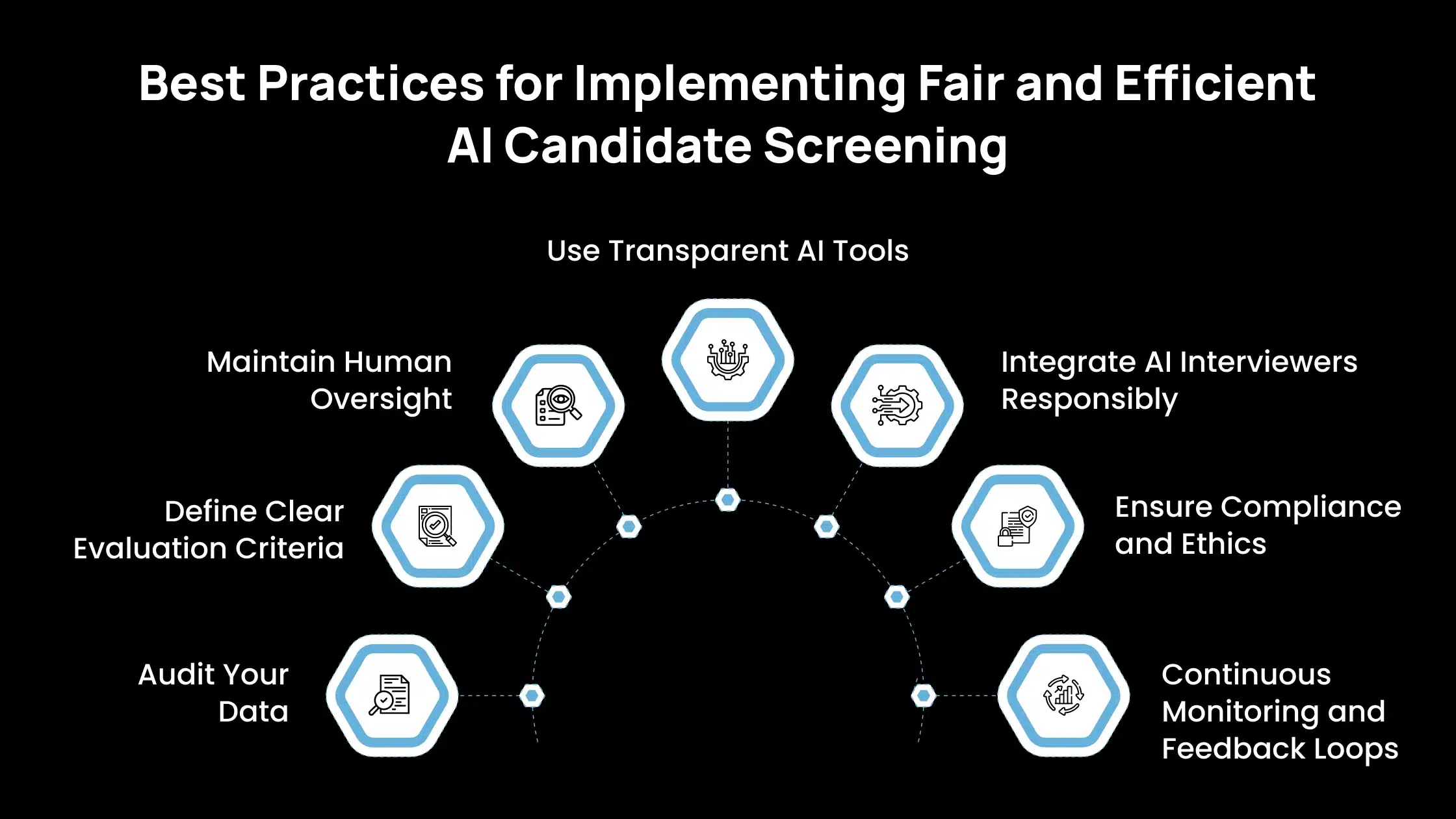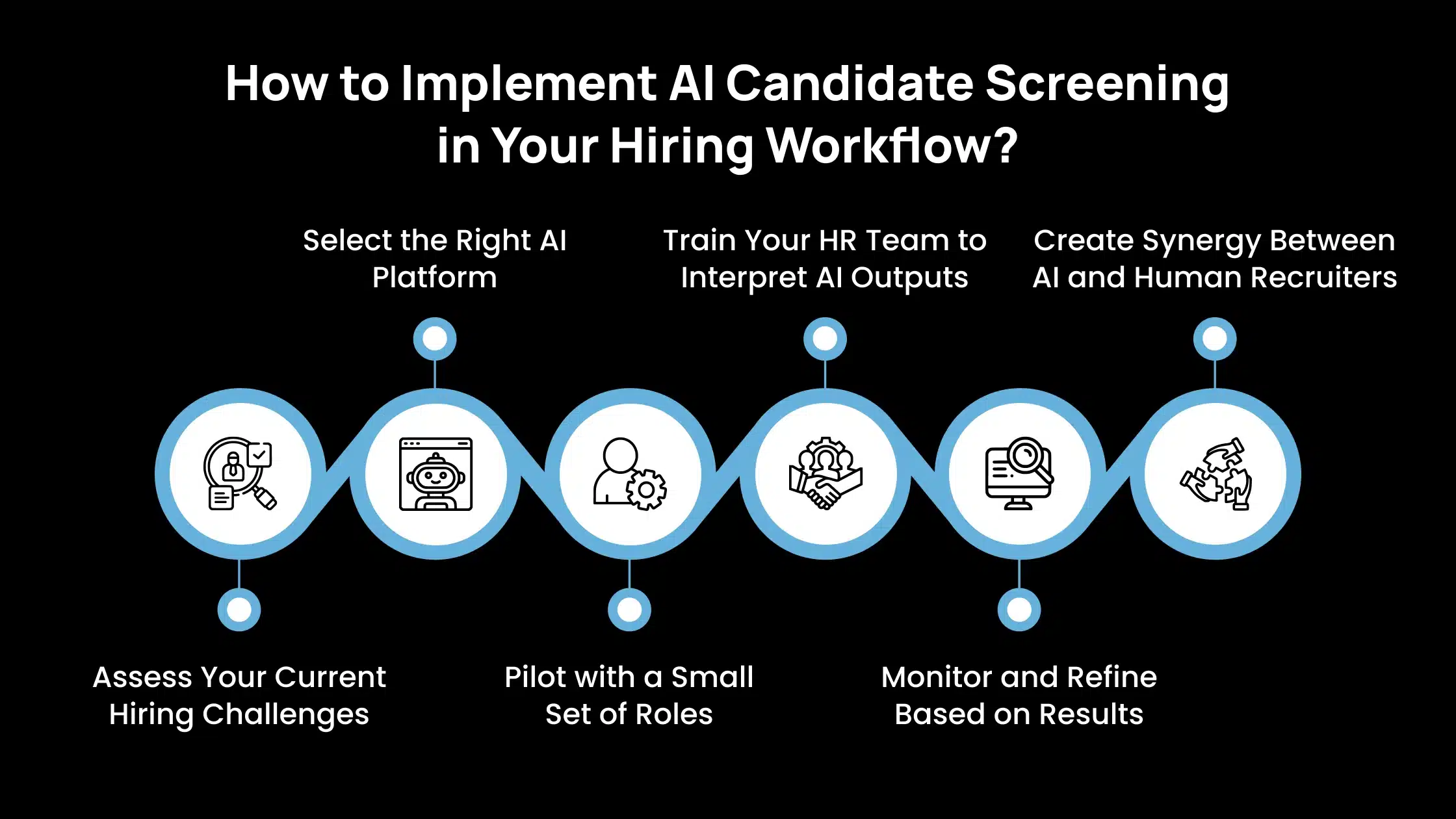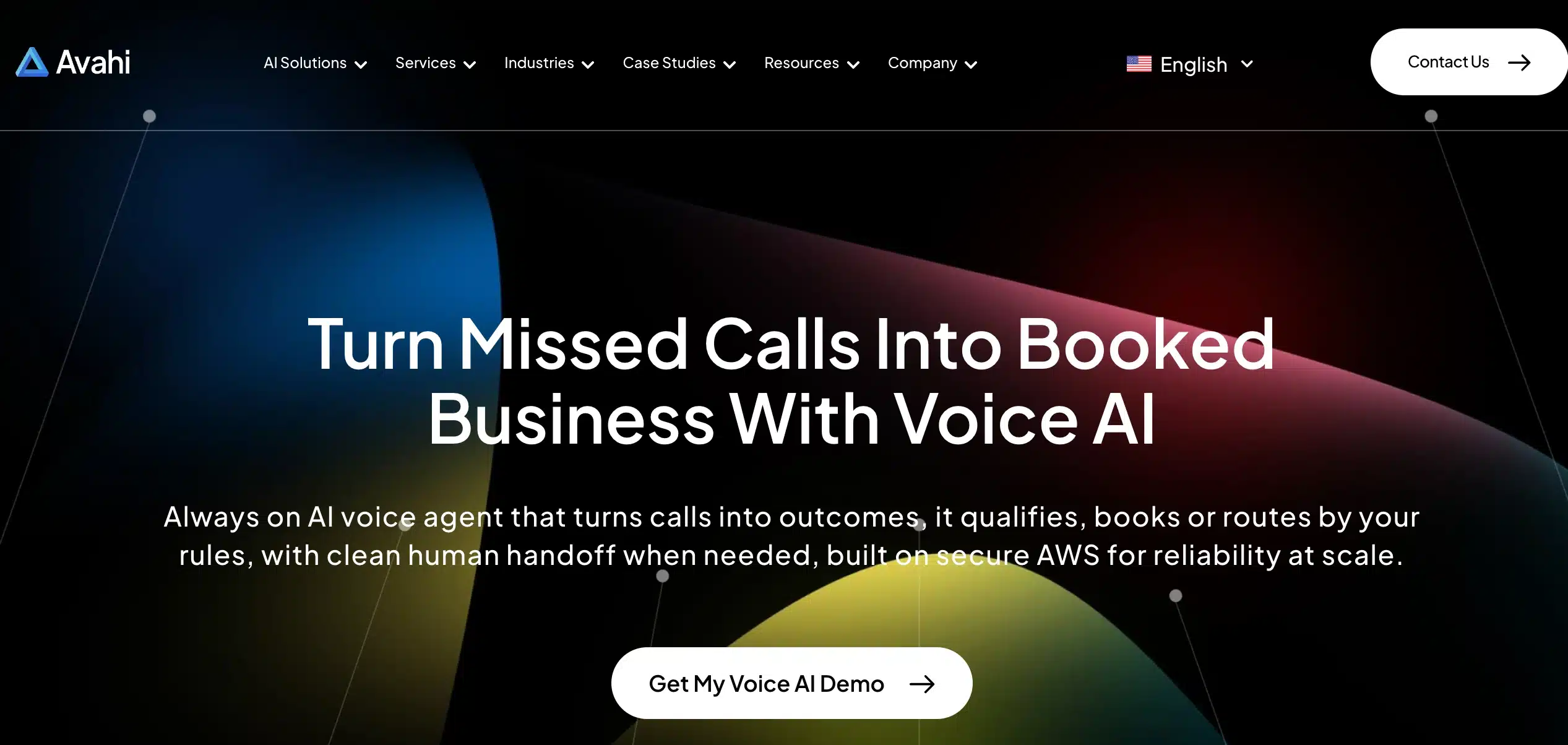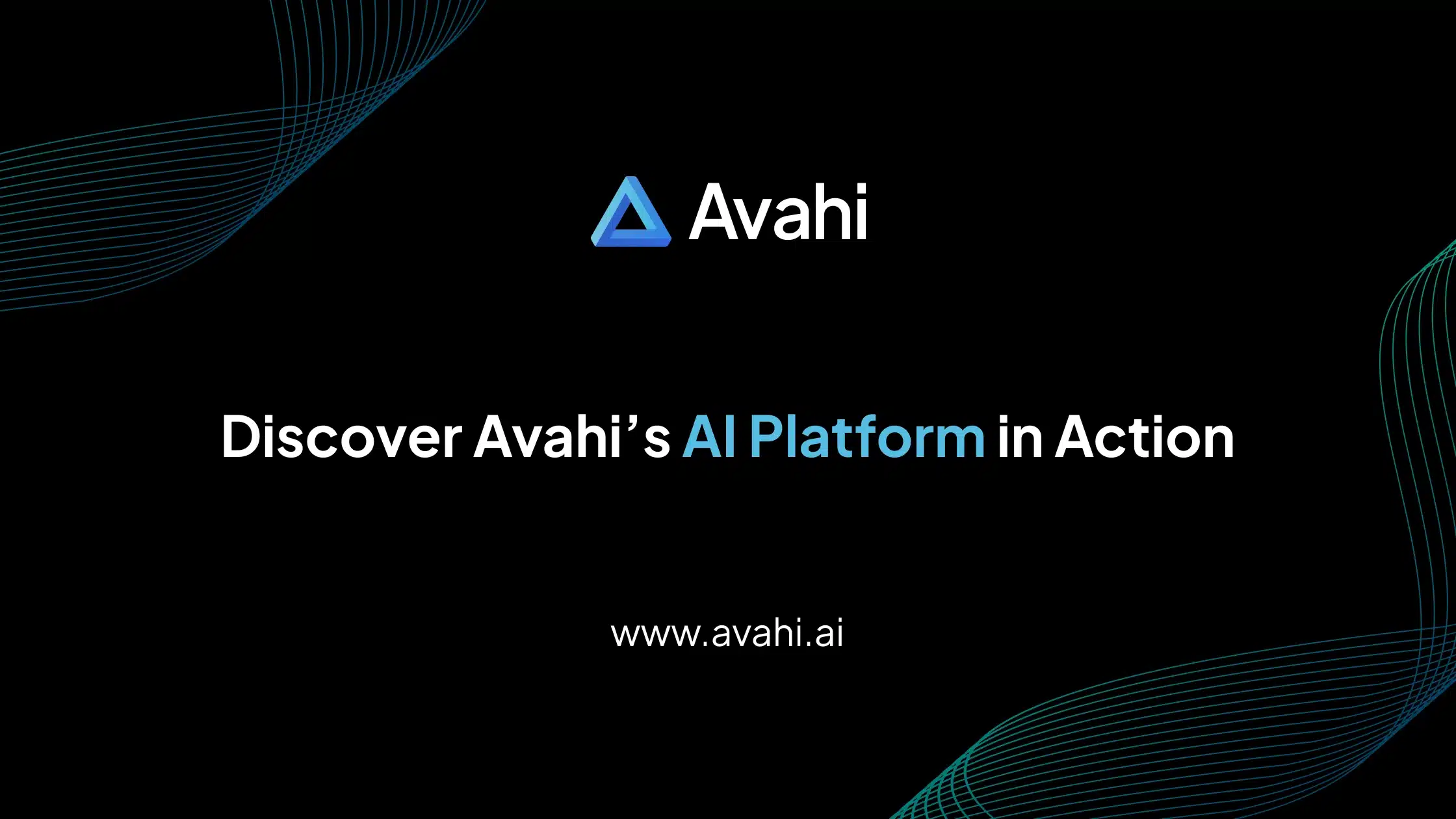Hiring has entered the era of algorithms, and how we utilize them will shape the future of work.
Companies are racing to fill roles faster than ever, yet candidates expect a process that feels human, unbiased, and transparent. Balancing both has become the defining challenge for recruiters worldwide.
87% of organizations now utilize AI in some aspect of their hiring process, reflecting the evolution of automation from an experiment to an operational standard.At the same time, 66% of U.S. job seekers say they hesitate to apply for roles if AI is involved in the hiring decision, revealing a clear trust gap between technology and human judgment.
These numbers point to one reality. AI candidate screening is becoming a standard part of the hiring process. But its value depends entirely on how it’s implemented. If used responsibly, AI can help recruiters evaluate talent faster, more objectively, and at scale. If not, it risks reinforcing bias and alienating the very people it aims to attract.
This blog breaks down what AI candidate screening and automated candidate screening truly mean for today’s hiring teams.
TL;DR
|
The Fundamentals of AI Candidate Screening in Modern Recruitment
AI candidate screening is the process of using technology, mainly machine learning and natural language processing (NLP), to evaluate job applicants automatically.
Instead of relying solely on manual reviews, these systems analyze resumes, application data, and even interview responses to identify candidates who best match the role’s requirements. The goal is to reduce bias, save time, and improve hiring accuracy.
How Automated Candidate Screening Differs from Conventional Resume Filtering
Traditional resume filtering tools search for specific keywords. If a candidate doesn’t use the exact words as the job description, their resume may never be seen.
AI candidate screening works differently. It understands the context behind words and phrases, not just the words themselves. For example:
- It recognizes that “sales growth” and “revenue increase” describe the same skill.
- It can assess whether a candidate’s experience aligns with the role’s intent, even if their wording differs.
- It evaluates skill relevance and experience depth, not only keyword frequency.
This makes the process more accurate and fair, reducing the chance of strong candidates being filtered out for missing a specific keyword.
How an AI Interviewer Works
An AI interviewer conducts short, structured video or voice interviews. It assesses not only what candidates say but how they say it.
- It evaluates tone, clarity, and sentiment to understand communication style.
- It can flag inconsistencies or highlight candidates who demonstrate confidence, empathy, or problem-solving skills.
- Recruiters then review AI-generated insights before deciding who moves forward.
This creates a faster, consistent, and more objective screening process without losing the human context that matters in hiring.
Types of AI Candidate Screening Solutions That Streamline the Hiring Process
AI candidate screening tools come in different forms, each designed to address specific stages of the hiring process. Understanding these types helps organizations select the optimal mix for their recruitment needs, striking a balance between efficiency, accuracy, and fairness.
1. Resume Parsing and Matching Tools
These tools automatically analyze resumes and match them to job descriptions. They extract key information such as skills, education, experience, and certifications using Natural Language Processing (NLP).
Instead of relying on keyword matches, they interpret context, understanding that “sales growth” and “revenue increase” mean the same thing. Advanced systems rank candidates based on how closely their profiles align with job criteria.
These are ideal for organizations receiving large volumes of applications that require quick and consistent shortlisting.
2. AI-Powered Pre-Screening Chatbots
AI chatbots engage with candidates during the early application phase. They ask structured questions to confirm qualifications, experience, and availability.
Responses are analyzed in real-time to determine whether candidates meet the minimum job requirements. Chatbots can also schedule interviews or collect missing details, saving recruiter time.
This reduces manual communication while maintaining a responsive and professional candidate experience.
3. Video and Voice Interview Analyzers
These tools evaluate recorded or live interviews using AI-driven speech and facial analysis. They assess tone, sentiment, and verbal clarity to gauge communication skills.
Some systems analyze microexpressions or behavioral cues though these must be used carefully to avoid bias. Results provide recruiters with structured feedback on how candidates perform under real-world questioning.
Always ensure candidates consent to such analysis and that the tool’s criteria are job-relevant and validated.
4. Skill and Cognitive Assessment Platforms
AI-based assessment systems test specific skills, problem-solving ability, or cognitive reasoning.
They generate adaptive questions based on the candidate’s responses. AI measures not just correctness, but how a person arrives at an answer, speed, logic, and decision-making patterns.
These platforms integrate with HR systems to objectively compare candidate scores across applicants. The primary purpose is to provide a data-driven perspective on job readiness, thereby reducing reliance on subjective screening.
5. Predictive Analytics and Talent Intelligence Systems
These systems use machine learning to forecast candidate success and long-term fit. They combine resume data, past performance metrics, and even organizational trends to predict future outcomes.
Insights include the likelihood of retention, adaptability, and cultural alignment. Recruiters use these predictions to prioritize candidates who best match the role and company environment.
It moves hiring from reactive selection to proactive, evidence-based decision-making.
6. End-to-End AI Recruitment Suites
Comprehensive platforms integrate all screening functions, parsing, chatbots, interviews, and analytics within one ecosystem. They synchronize with Applicant Tracking Systems (ATS) for seamless workflow.
Recruiters can manage every step from sourcing to shortlisting in a single dashboard. It is built with compliance and reporting features that simplify auditing and accountability. It is best for enterprises or agencies managing large-scale, multi-role recruitment operations.
The Main Advantages of Implementing AI Candidate Screening
Here is a list of the main benefits that AI candidate screening brings to hiring teams and organizations.
1. Speed and Efficiency
With large applicant volumes, your team spends a significant amount of time manually reviewing each resume. Using automated candidate screening, many systems report 30-40% shorter time-to-hire.
Automation enables a system to sort, parse, and rank thousands of applications in minutes, freeing recruiters from repetitive filtering tasks. Once AI handles the front-end screening, your team can shift focus from admin tasks to strategic decision-making, such as candidate engagement and fit assessment.
2. Improved Consistency
Conventional manual screening often suffers from variability, as different recruiters apply slightly different standards, and fatigue can also creep in. AI candidate screening establishes standardised evaluation criteria, and the same rules and parameters measure every applicant.
The result is a reduced influence of subjective bias and fatigue, especially when multiple applications arrive and the human reviewer’s workload is heavy.
3. Enhanced Quality of Hire
Beyond speed, good screening is crucial for ensuring a good candidate-job fit. AI models use past-hire data, skill matching, and experience depth to predict performance fit.
When integrated with your Applicant Tracking System (ATS) and HR data, you gain a more comprehensive profile of each candidate, including skills, experience, and potential alignment with your culture.
Better screening upstream means you invest interview time in stronger candidates, rather than spending time on false starts or poor matches.
4. Data-Driven Insights
AI screening tools generate detailed analytics, which reveal the best sources for candidates, the most effective job postings, and the ratio of applicants to those who advance. These insights enable you to refine your hiring strategy by adjusting job descriptions, targeting more effective channels, and identifying areas for improvement.
With measurable data, recruitment becomes more strategic and less reactive; you’re working off evidence, not just intuition.
Ethical and Operational Challenges in AI-Based Hiring
While AI candidate screening improves speed and consistency, it also introduces essential risks that organizations must manage carefully. Here is an overview of the major risks and ethical concerns that recruiters must address to ensure fair and transparent AI hiring practices.
1. Algorithmic Bias
AI systems learn from historical hiring data. If that data contains bias, such as gender, ethnicity, or age imbalance, the model can unintentionally reproduce those same patterns. For instance, if past hiring practices favored specific demographics or educational backgrounds, the AI may continue to prefer similar profiles.
Even neutral variables, like ZIP codes or word choice, can serve as indirect indicators of race or gender. A 2023 Harvard Business Review report noted that biased algorithms can disadvantage qualified candidates by as much as 40% when data isn’t properly audited.
Use diverse and representative training datasets, regularly audit model outcomes, and ensure human oversight before final decisions.
2. Transparency and Explainability
Recruiters and candidates both need clarity on how AI screening decisions are made. Every recommendation or rejection should have a traceable rationale, such as skills mismatch or insufficient experience, rather than opaque algorithmic scoring.
The EU AI Act (2024) classifies recruitment AI as “high risk,” requiring transparency and explainability in automated decisions. The U.S. Equal Employment Opportunity Commission (EEOC) advises that employers validate and disclose automated screening methods to minimize the potential for discriminatory impacts.
HR teams must be able to explain AI recommendations to hiring managers and candidates in plain language, ensuring accountability remains human-led.
3. Candidate Privacy
Handling personal and behavioral data in AI-driven hiring demands strict privacy safeguards. AI systems collect and process sensitive candidate information, such as resumes, video interviews, test scores, and even facial expressions in some tools. These must be stored, encrypted, and accessed in a responsible manner.Under GDPR, candidates must be informed about data collection, processing methods, and retention timelines. Some regions (like California’s CCPA) also give applicants rights to access or delete their data.
Always obtain explicit consent before using AI interviewers or video analytics. Candidates should be aware of how their data will be used, who will have access to it, and for how long it will be retained.
Best Practices for Implementing Fair and Efficient AI Candidate Screening
Organizations using AI for candidate screening require a clear structure to ensure accuracy, fairness, and compliance. Below are some of the significant practices that help maintain both speed and ethics in the hiring process.
1. Audit Your Data
AI systems are only as good as the data on which they are trained.
- Use datasets that represent a broad and diverse range of candidates.
- Avoid training on past hiring data that may contain bias or imbalance.
- Regularly test model outcomes to check for patterns of exclusion or overrepresentation.
- Document every audit—who ran it, when, and what was changed.
Ensure your AI is evaluating skills and experience, not demographic similarities to past hires.
2. Define Clear Evaluation Criteria
AI should evaluate candidates based solely on job-related, measurable attributes.
- Build criteria directly from job descriptions and required competencies.
- Exclude non-essential or subjective data points, such as personal background or non-relevant education.
- Involving your HR and hiring teams in reviewing the logic behind AI filters and weightings is essential.
Every applicant is judged on the same, job-specific standards, reducing bias and misalignment.
3. Maintain Human Oversight
AI can streamline screening, but final decisions should remain in the hands of humans.
- Use AI for the initial shortlisting and pattern recognition.
- Let trained recruiters verify the AI’s recommendations and context.
- Keep the “human-in-the-loop” approach: humans validate, question, and approve outcomes before proceeding.
Human judgment ensures the elements of fairness, empathy, and accountability that no algorithm can fully replace.
4. Use Transparent AI Tools
Transparency builds trust among both recruiters and candidates.
- Choose vendors that provide explainable AI models, which can demonstrate why a decision was made.
- Prefer tools that include bias-detection and reporting features.
- Educate recruiters on how to interpret insights generated by AI accurately.
Everyone involved , recruiters, managers, and applicants, understands how AI contributes to each hiring decision.
5. Integrate AI Interviewers Responsibly
AI interviewers can handle pre-screening efficiently, but they must be used thoughtfully.
- Limit their use to structured, early-stage evaluations such as availability, qualifications, or basic skills.
- Never let AI make the final decision about candidate suitability.
- Review automated scoring systems periodically to confirm they remain aligned with the job’s actual performance needs.
Keep AI interviewers as assistants to recruiters, not replacements.
6. Ensure Compliance and Ethics
Compliance protects both candidates and employers from legal and reputational risks.
- Follow frameworks such as EEOC guidelines (U.S.), GDPR (EU), and ISO/IEC 42001 standards for AI governance.
- Maintain documentation on how AI tools are tested, implemented, and monitored to ensure transparency and accountability.
- Create an internal AI ethics policy that defines acceptable use, accountability, and candidate rights.
Compliance ensures transparency and builds credibility with both regulators and job seekers.
7. Continuous Monitoring and Feedback Loops
AI models evolve, and so should your oversight process.
- Monitor performance data, rejection rates, and diversity outcomes on a regular basis.
- Gather feedback from recruiters and candidates regarding the fairness and clarity of the process.
- Update models with new hiring data to improve accuracy and reduce unintended bias.
A monitored and continuously refined AI system ensures fairness, accuracy, and alignment with organizational hiring goals.
How to Implement AI Candidate Screening in Your Hiring Workflow?
Below are practical steps to integrate AI smoothly into your existing recruitment workflow.
1. Assess Your Current Hiring Challenges
Before adding any AI system, identify where your current process struggles. Track metrics like time-to-hire, cost per hire, and candidate drop-off rates.
Pinpoint repetitive or time-consuming tasks, resume screening, interview scheduling, or skill validation. Engage hiring managers and recruiters to understand pain points and what they need AI to solve.
Define the exact problems AI should address, ensuring the solution is targeted and measurable.
2. Select the Right AI Platform
Choose an AI platform that aligns with your organization’s goals, values, and tech ecosystem.
Ensure ATS compatibility to maintain the integrity of your existing workflows.
Prioritize explainable AI tools that clearly show how they score or rank candidates. Review the vendor’s bias mitigation practices, data protection policies, and compliance certifications (EEOC, GDPR). Ask for transparent documentation, demo results, and client references before finalizing.
3. Pilot with a Small Set of Roles
Start small before scaling organization-wide. Test the AI screening tool on a limited set of job roles, preferably high-volume or repetitive ones.
Compare AI shortlisting results with manual evaluations to measure accuracy and fairness. Gather feedback from recruiters, hiring managers, and candidates to evaluate usability and trust. A focused pilot lets you identify gaps, adjust criteria, and fine-tune settings before a full rollout.
4. Train Your HR Team to Interpret AI Outputs
AI is only effective when recruiters know how to use it. Provide training sessions on how the tool evaluates candidates and generates rankings.
Teach teams to verify AI results rather than rely on them blindly. Establish review checkpoints where recruiters validate AI-driven recommendations to ensure accuracy and effectiveness. Encourage recruiters to question anomalies or unclear scoring.
5. Monitor and Refine Based on Results
Once implemented, continuously track how AI impacts your hiring outcomes. Measure improvements in efficiency, candidate quality, and diversity.
Collect candidate feedback on fairness and communication experience. Regularly audit results for bias or inconsistencies. Update training data and AI rules as job requirements or company goals evolve.
6. Create Synergy Between AI and Human Recruiters
AI should enhance, not replace, the expertise of recruiters. Let AI handle data-intensive, repetitive tasks, such as sorting resumes or scheduling appointments.
Recruiters focus on understanding candidate motivations, cultural fit, and long-term potential. Keep open communication between the technology team and HR to ensure both systems work in sync.
Emerging Trends Shaping the Future of AI in Recruitment
Below are three major trends shaping what’s next, each with real-world relevance and practical implications for your organisation.
1. Emotion-Recognition and Conversational AI Interviewers
Some organisations are using tools that analyse facial expressions, voice tone, and wording during video interviews to glean insight into candidate attitudes or communication style.
If you adopt this approach, ensure you communicate clearly with candidates about what’s being analyzed, verify the accuracy of the metrics, and guard against bias or misinterpretation.
It may help you quickly assess readiness for roles where communication or presentation style matters, but it should remain supplementary, not the sole basis for decision-making.
2. Predictive Analytics for Workforce Planning
AI is being used not just for screening candidates but for forecasting hiring needs, identifying skill gaps, and planning workforce changes ahead of time.
According to McKinsey research, companies that use strategic workforce planning driven by data see improved alignment of talent with their business strategy.
As an organisation scaling roles (or in a market with talent scarcity), you can integrate predictive modules into your screening workflow to prioritise sourcing for future needs. This means screening tools that not only select current applicants, but also flag upcoming gaps.
3. Integration with Skills-Based and Continuous Learning Platforms
The following wave links screening with learning. AI systems will not only assess what candidates bring today but also whether they can develop into what you need tomorrow.
Although specific large-scale public studies are fewer in number, reports indicate that companies are shifting toward skill-based hiring and continuous learning to remain agile.
When selecting AI screening solutions, evaluate whether they can incorporate future-oriented criteria (learning agility, upskilling potential) rather than only current experience.
Build a workflow where, after screening, candidates who may not fully match today’s role but show strong learning potential are placed into prepared talent pools or development tracks.
Why Avahi AI Voice Agents Are Valuable for Modern Hiring Teams
In 2025, speed and availability are critical in recruitment. Missed candidate calls, delayed responses, or scheduling bottlenecks can result in lost great hires.
This is where Avahi’s AI Voice Agent becomes a valuable tool for talent acquisition teams.
- It acts as an extension of your recruiting process, qualifying candidate inquiries, scheduling interviews, and routing calls to recruiters when needed, all while ensuring a seamless, human-like experience.
- For recruitment teams handling high volumes or operating across multiple time zones, Avahi’s voice AI helps maintain consistent engagement, even outside of business hours.
- It reduces administrative load by managing repetitive candidate interactions, including confirming availability, handling FAQs, logging candidate data into your CRM or ATS, and sending reminders.
Recruiters spend more time on meaningful conversations and less on coordination, while candidates get fast, professional responses anytime they call.
Discover Avahi’s AI Platform in Action
At Avahi, we empower businesses to deploy advanced Generative AI that streamlines operations, enhances decision-making, and accelerates innovation—all with zero complexity.
As your trusted AWS Cloud Consulting Partner, we empower organizations to harness the full potential of AI while ensuring security, scalability, and compliance with industry-leading cloud solutions.
Our AI Solutions Include
- AI Adoption & Integration – Leverage Amazon Bedrock and GenAI to Enhance Automation and Decision-Making.
- Custom AI Development – Build intelligent applications tailored to your business needs.
- AI Model Optimization – Seamlessly switch between AI models with automated cost, accuracy, and performance comparisons.
- AI Automation – Automate repetitive tasks and free up time for strategic growth.
- Advanced Security & AI Governance – Ensure compliance, detect fraud, and deploy secure models.
Want to unlock the power of AI with enterprise-grade security and efficiency? Start Your AI Transformation with Avahi Today!
Frequently Asked Questions
1. What is AI candidate screening?
AI candidate screening utilizes technologies such as machine learning and natural language processing (NLP) to evaluate resumes, applications, and interviews automatically. It helps recruiters shortlist candidates more efficiently and consistently.
2. How does AI candidate screening differ from conventional resume screening?
Conventional systems rely on keyword matches, while AI interprets context and intent. It can recognize similar skills expressed in different ways and assess overall fit rather than exact wording.
3. What are the main benefits of using AI in hiring?
AI enhances speed, minimizes bias, ensures consistent evaluation, and delivers data-driven insights. It enables recruiters to focus on strategic decisions rather than repetitive administrative tasks.
4. Can AI in hiring be biased?
Yes, if trained on biased data. AI models can unintentionally reproduce existing patterns of discrimination. Regular audits, diverse datasets, and human oversight are crucial for minimizing bias.
5. Is AI candidate screening compliant with hiring laws and regulations?
Compliance depends on implementation. Employers must adhere to standards such as the GDPR, EEOC guidelines, and the EU AI Act, ensuring transparency and fairness in automated decision-making processes.


